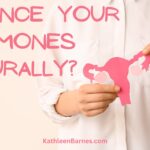 How can I tell if a multi-vitamin is a good one or not? I hear this question often and I wish I could give you a simple answer. This is going to require some digging on your part and will depend on many factors, not the least of which are your age and gender.
How can I tell if a multi-vitamin is a good one or not? I hear this question often and I wish I could give you a simple answer. This is going to require some digging on your part and will depend on many factors, not the least of which are your age and gender.
1. Organic: The simplest answer I know is to find a multi that is composed exclusively of organically grown, vine-ripened whole fruits and vegetables. That’s easier said than done. I am familiar with one multi-level marketing brand whose followers are evangelists for their product, who, once they’ got their foot in the door, are harder to evade than those door-to-door missionaries. I find them exceptionally annoying.
At my local warehouse store, I found a product that compares item for item at less than 1/3 of the cost.
2. Caveat Emptor: So the second piece of advice is to be a good shopper. You’re probably already an excellent label reader. Use your fine-toothed comb on supplement labels and be sure you’re comparing apples to apples across brands.
3. Whole molecules: Ideally, you want to avoid fractured vitamin molecules. I’ve written about this in the past (READ: Vitamins:How do we know they work?) , but here’s a very brief summary:
Supplement manufacturers often substitute cheap ingredients for the ones that really work. For example, many, if not most, include Vitamin C and in parentheses you’ll see (as ascorbic acid). Vitamin C is not ascorbic acid! All vitamin molecules are incredibly complex—What a gift from Mother Nature! —and they usually have synergistic effects. Taking one fraction of the whole molecule can unbalance your system and may have long-term negative consequences. The same holds true for vitamins A (not beta carotene alone!) and Vitamin E (not tocopherols alone!).
‘Nuff said about this subject. It’s hard to find organic, pure, whole food supplements. Be a detective. There are a few good ones out there.
4. Reputation: Next, look for a quality manufacturer. Yes, dietary supplements are regulated, often in ways that aren’t helpful to anyone, but there are few, if any, guarantees of quality. Consumerlab.com LINK does quality and contents testing on a fairly wide variety of supplements and their findings can be very helpful. However, you can’t see much with paying a subscription fee. I have joined and will share some of the findings with you.
5. USP: One is the “USP” (United States Pharmacopeia) designation that gives you some assurances that the product was manufactured according to a set of quality standards. Some products have been known to have too little of the promised ingredients, or to have too much, which could be harmful, or even to have been adulterated with prescription drugs, as in the care of a saw palmetto supplement a few years back that was actually found to contain Viagra!
6. Bioavailability: That’s just a fancy way of saying, “Will it dissolve in my digestive tract so I can use it?” An easy test for tablet-type pills: put one in a glass of warm vinegar. If it doesn’t dissolve in 30 minutes, it won’t dissolve in your digestive tract, either.
I recently heard an interesting test for fish oil supplements: put one in the freezer overnight. Then cut into it in the morning. If the oil is still liquid, it is probably fairly decent quality.
As an aside—look for an assurance that your fish oil is purified and free of heavy metal contaminants. Since fish concentrate toxins, like mercury, in their livers, you want to be sure your fish oil isn’t a toxic soup.
7. Manufacturer contact: Contact information for the manufacturer should be easy to find on every bottle. If you’re unsure, call. It is sometimes surprising the information you’ll glean from one simple phone call.
8. What’s the RDA?: This is the government’s recommendation for minimum nutrient needs. This is actually laughable, because the amounts are generally just enough to keep you with only one foot in the grave, rather than both feet. For example the RDA for vitamin C for adult women is a ridiculously low 75 mg. That amount is probably just enough to keep you from getting a Vitamin C deficiency disease called scurvy. If you’re over 60, at that dosage, you probably have scurvy already (bruising, loose teeth.). Here’s an RDA chart. At the very minimum, your multi should contain these vitamin and mineral levels.
Another side note: My co-author on The Calcium Lie, Dr. Robert Thompson recommends against taking vitamins and mineral together since they may not be absorbed properly.
8. Price: It’s not always necessary to pay a high price for high quality. However, a caution on that–one-a-day type supplements cannot possibly contain a reasonable quantity of nutrients. The pill might end up being the size of an egg! Some products have added ingredients, such as herbs, that can raise the price, but also raise the quality.
Last, but not least, ask for advice from friends, professionals and
experts. You may actually get good advice in your local health food store.
As I said earlier this week, you will never know if your supplements stopped a cold or even a heart attack because you were taking good quality supplements. At the same time, none of us want to literally flush our nutrients and our money down the toilet.
Be a wise consumer!








A way to evaluate vitamins: muscle-testing (though not all muscle-testing is created equal).